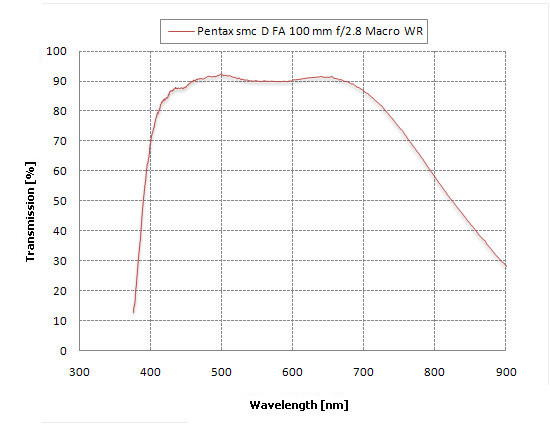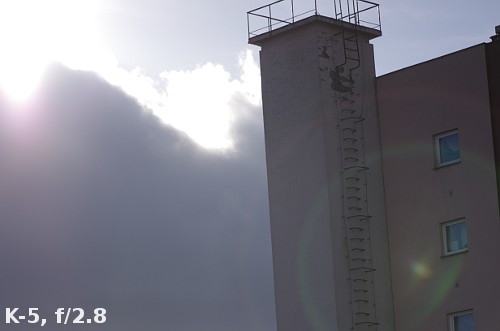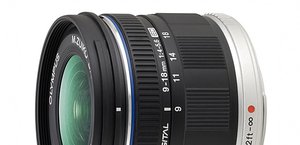Pentax smc D FA 100 mm f/2.8 Macro WR
9. Ghosting, flares and transmission
 |
As you see the graph is very flat and even in a wide range of wavelengths - from about 450 to almost 700 nm. It means the Pentax’s optics renders colours well and doesn’t feature any unwanted casts. The maximum transmission reaches 91-92% which is a good, but only good, result. Taking into account the fact that we deal here with sixteen air-to-glass surfaces we can easily calculate that about 0.5% of light is lost on one surface. Pentax has already shown in other tests that it can produce coatings which lose only 0.2-0.3% of light. If those coatings were used here the average transmission would amount to about 95-96%.
Please Support UsIf you enjoy our reviews and articles, and you want us to continue our work please, support our website by donating through PayPal. The funds are going to be used for paying our editorial team, renting servers, and equipping our testing studio; only that way we will be able to continue providing you interesting content for free. |
- - - - - - - - - - - - - - - - - - - - - - - - - - - - - - - - - - - - - - - - - - - - - - - -
Perhaps just because of that thriftiness on coatings the Pentax smc D FA 100 mm f/2.8 Macro WR doesn’t work against bright light very well. At the maximum relative aperture as well as on stopping down you can notice a distinct green-yellow light artifact – the colour which, on the transmission curve presented above, featured a slight dip.
 |
 |






